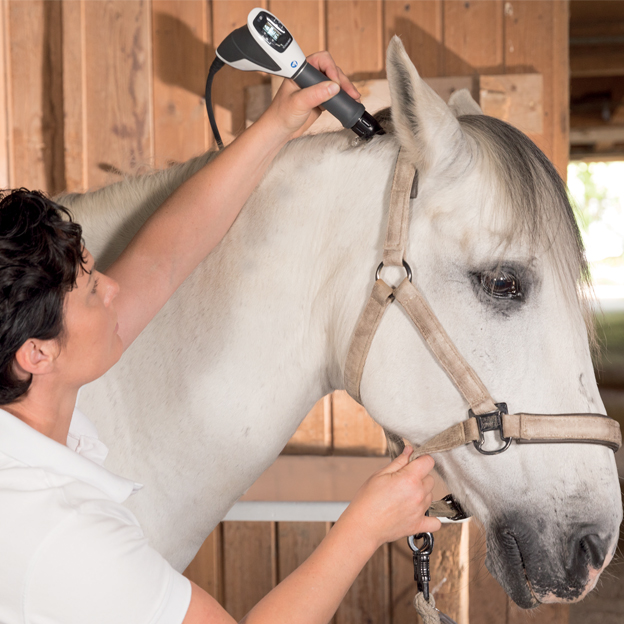Equine Therapy for Trauma Recovery: How Horses Help Heal Emotional Wounds
Equine Therapy for Trauma Recovery: How Horses Help Heal Emotional Wounds
Blog Article
Assessing the Effectiveness of Laser Treatment in Equine Treatment for Injury Rehab
The evaluation of laser therapy's performance in equine injury rehab rests on multiple aspects, consisting of healing time, discomfort mitigation, and tissue regrowth. Clinical research studies recommend noteworthy enhancements in problems like tendonitis and osteo arthritis, connected to improved cellular function and elevated ATP production. Vets regularly observe remarkable end results with laser therapy compared to traditional methods, positioning it as an essential aspect in equine care. The necessity for continuous monitoring and personalized treatment strategies can not be overemphasized. What details clinical proof sustains these cases, and just how do veterinarians execute these procedures in technique?
Recognizing Laser Treatment
Laser therapy has actually become an essential tool in vet medicine, specifically in the therapy of equine conditions. Understood for its non-invasive nature and effectiveness, laser treatment involves the application of details wavelengths of light to stimulate cells repair service and lower inflammation. This restorative technique is progressively favored for its capacity to speed up the healing process in steeds experiencing a range of musculoskeletal injuries and chronic conditions.
The main system behind laser treatment is its capability to enhance mobile functions. When laser light penetrates the skin, it is absorbed by mitochondria, the powerhouse of cells, which causes increased production of adenosine triphosphate (ATP) This biochemical energy boost facilitates mobile repair service and regeneration. In addition, laser treatment promotes vasodilation, enhancing blood circulation and oxygen distribution to damaged cells, hence speeding up recuperation.
In equine medication, laser treatment is particularly useful for problems such as tendonitis, osteo arthritis, and injury recovery. The technique is admired for its pain-relieving residential properties, permitting steeds to regain mobility and feature much more swiftly. Vets likewise appreciate its minimal adverse effects compared to various other therapy techniques, making it a dependable and safe option for equine care.

Just How Laser Treatment Functions

Upon absorption, these photons cause a collection of biochemical modifications, enhancing mitochondrial feature and causing enhanced adenosine triphosphate (ATP) production. This surge in ATP speeds up cellular metabolic rate, advertising tissue fixing and regrowth. Additionally, laser treatment modulates inflammatory responses by influencing cytokine levels and lowering oxidative anxiety, thus relieving discomfort and swelling.
Another substantial aspect of laser treatment is its role in boosting microcirculation. The therapy advertises vasodilation, enhancing blood flow and oxygen distribution to damaged tissues (Equine Therapy). This promotes the removal of mobile debris and sustains the proliferation of fibroblasts and collagen synthesis, crucial for injury recovery
Scientific Proof
The efficiency of laser treatment in equine therapy has actually been confirmed through different professional research studies, showcasing its therapeutic potential throughout a variety of additional resources problems. Numerous controlled trials and empirical studies have recorded substantial improvements in cells fixing, pain reduction, and general recovery timelines. A study carried out by Turner et al. (2012) showed that equines treated with low-level laser treatment (LLLT) for ligament injuries exhibited accelerated healing compared to those getting traditional therapies. The research highlighted a significant decrease in swelling and boosted collagen formation.
Likewise, study go to website by Johnson and colleagues (2015) concentrated on equine muscular tissue injuries, revealing that laser therapy substantially quickened muscular tissue fiber regrowth and lowered muscular tissue rigidity. These searchings for were substantiated by histological analyses showing improved muscle tissue organization. Medical assessments have shown that laser therapy can reduce chronic problems such as osteoarthritis. A study by Smith et al. (2018) reported that horses with osteoarthritic joints experienced remarkable discomfort relief and increased variety of movement following a regimen of laser treatment sessions.
Vet Insights

Veterinarians also appreciate the adaptability of laser treatment. It can be used for a wide range of problems, from surface wounds to deeper bone and joint injuries. Dr. Emily Brown highlights its energy in dealing with problems like tendonitis and osteo arthritis, where conventional therapies often fail. She explains that laser treatment can be tailored to the specific needs of each horse, making certain ideal end results.
Additionally, veterinarians value the ability to incorporate laser therapy with other therapy techniques. This multimodal method can enhance total treatment efficacy, giving a detailed service for equine rehabilitation. Such recommendations from seasoned specialists highlight the growing approval and application of laser therapy in equine medication.
Practical Considerations
A key facet of executing laser treatment in equine treatment involves recognizing the useful factors to consider that ensure click here now its efficiency and security. It is essential to pick the appropriate laser tool, as various types vary in wavelength, power, and penetration deepness. Vets should be fluent in these specifications to customize treatment methods effectively to every injury kind
Furthermore, the regularity and period of laser therapy sessions need mindful planning to make the most of restorative advantages while reducing any type of possible unfavorable impacts. Regular monitoring of the horse's action to therapy can guide required modifications in the treatment routine. Establishing a risk-free and regulated setting during therapies is additionally important to avoid unintended direct exposure to laser emissions, which could harm both the equine and the trainer.
Educating and qualification of employees carrying out laser therapy are critical to guarantee appropriate method and to maintain safety and security standards. Additionally, preserving precise records of each session, including laser settings and observed results, is important for assessing the general efficiency of the treatment and for making data-driven decisions.
Conclusion
Laser therapy has emerged as an effective modality in equine injury rehabilitation, offering substantial benefits in recovery time, discomfort alleviation, and cells recovery. Scientific researches highlight considerable enhancements in conditions such as tendonitis and osteoarthritis, attributed to enhanced cellular feature and raised ATP manufacturing. Vet monitorings prove these searchings for, highlighting remarkable results compared to standard treatments. For ideal results, continuous surveillance and personalized treatment methods stay vital in leveraging the full possibility of laser treatment in equine care.
Report this page